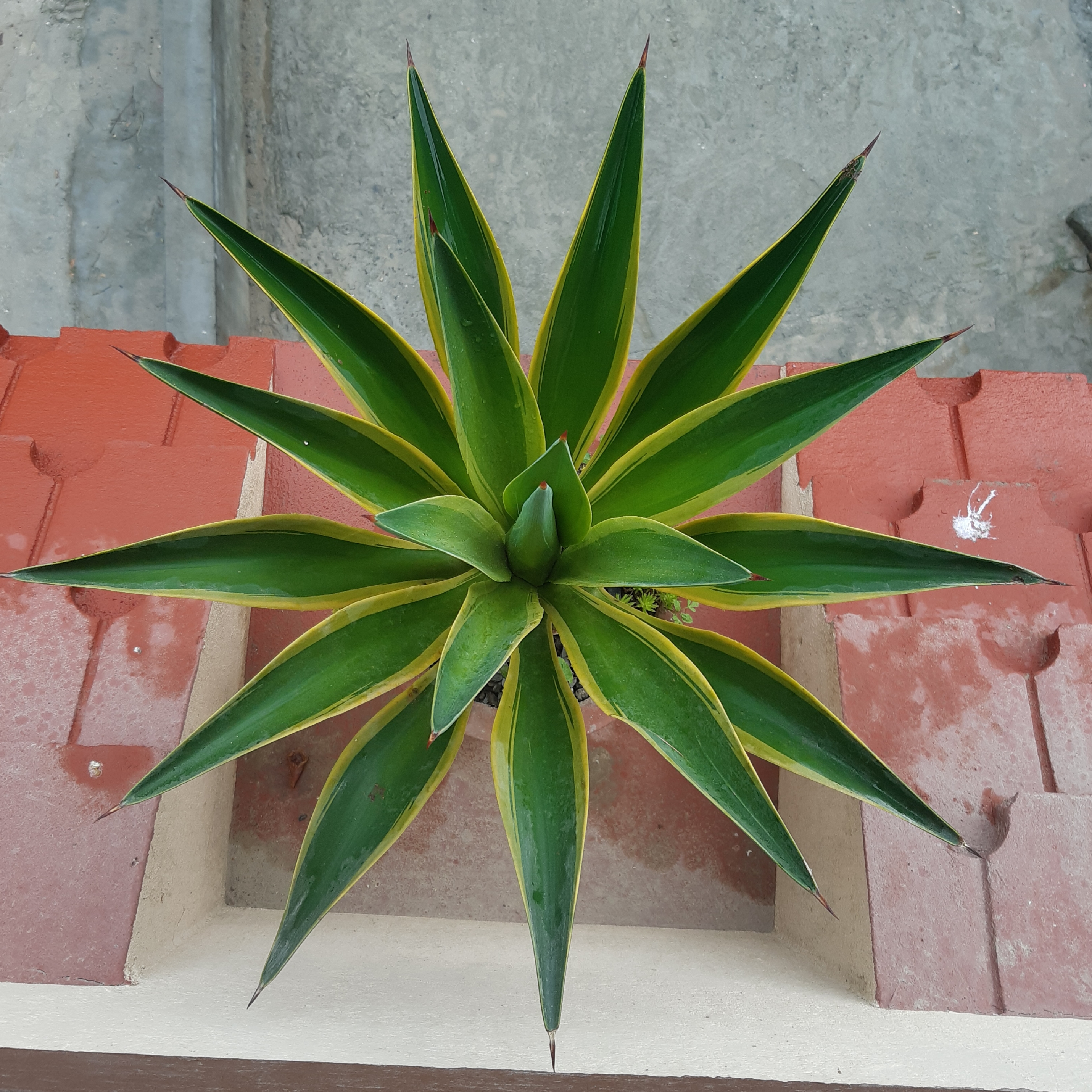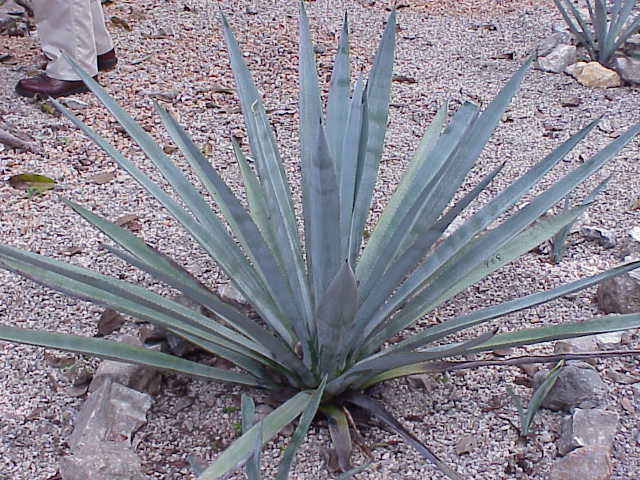Agave tequilana on:
[Wikipedia]
[Google]
[Amazon]
''Agave tequilana'', commonly called blue agave () or tequila agave, is an


agave
''Agave'' (; ; ) is a genus of monocots native to the hot and arid regions of the Americas and the Caribbean, although some ''Agave'' species are also native to tropical areas of North America, such as Mexico. The genus is primarily known for ...
plant that is an important economic product of Jalisco
Jalisco (, , ; Nahuatl: Xalixco), officially the Free and Sovereign State of Jalisco ( es, Estado Libre y Soberano de Jalisco ; Nahuatl: Tlahtohcayotl Xalixco), is one of the 31 states which, along with Mexico City, comprise the 32 Federal ...
, Mexico, due to its role as the base ingredient of tequila
Tequila (; ) is a distilled beverage made from the blue agave plant, primarily in the area surrounding the city of Tequila northwest of Guadalajara, and in the Jaliscan Highlands ('' Los Altos de Jalisco'') of the central western Mexican s ...
, a popular distilled beverage
Liquor (or a spirit) is an alcoholic drink produced by distillation of grains, fruits, vegetables, or sugar, that have already gone through alcoholic fermentation. Other terms for liquor include: spirit drink, distilled beverage or hard l ...
. The high production of sugars named agavins, mostly fructose
Fructose, or fruit sugar, is a ketonic simple sugar found in many plants, where it is often bonded to glucose to form the disaccharide sucrose. It is one of the three dietary monosaccharides, along with glucose and galactose, that are absorb ...
, in the core of the plant is the main characteristic that makes it suitable for the preparation of alcoholic beverages.
The tequila agave is native to the states of Jalisco, Colima
Colima (), officially the Free and Sovereign State of Colima ( es, Estado Libre y Soberano de Colima), is one of the 31 states that make up the 32 Federal Entities of Mexico. It shares its name with its capital and main city, Colima.
Colima i ...
, Nayarit
Nayarit (), officially the Free and Sovereign State of Nayarit ( es, Estado Libre y Soberano de Nayarit), is one of the 31 states that, along with Mexico City, comprise the Federal Entities of Mexico. It is divided in 20 municipalities and its ...
and Aguascalientes
Aguascalientes (; ), officially the Free and Sovereign State of Aguascalientes ( es, Estado Libre y Soberano de Aguascalientes), is one of the 32 states which comprise the Federal Entities of Mexico. At 22°N and with an average altitude of a ...
in Mexico. The plant favors altitudes of more than and grows in rich and sandy soils. Blue agave plants grow into large succulents
In botany, succulent plants, also known as succulents, are plants with parts that are thickened, fleshy, and engorged, usually to retain water in arid climates or soil conditions. The word ''succulent'' comes from the Latin word ''sucus'', meani ...
, with spiky fleshy leaves, that can reach over in height. Blue agaves sprout a stalk (''quiote'') when about five years old that can grow an additional ; they are topped with yellow flowers. The stalk is cut off from commercial plants so the plant will put more energy into the heart.
The flowers are pollinated by the greater long-nosed bat (and by insects and hummingbirds) and produce several thousand seeds per plant, many of them sterile. The plant then dies. Cultivated plants are reproduced by planting the previously removed shoots; this has led to a considerable loss of genetic diversity in cultivated blue agave.
It is rarely kept as a houseplant
A houseplant, sometimes known as a pot plant, potted plant, or an indoor plant, is an ornamental plant that is grown indoors. As such, they are found in places like residences and offices, mainly for decorative purposes. Common houseplants are us ...
, but a 50-year-old blue agave in Boston
Boston (), officially the City of Boston, is the state capital and most populous city of the Commonwealth of Massachusetts, as well as the cultural and financial center of the New England region of the United States. It is the 24th- mo ...
grew a stalk requiring a hole in the greenhouse roof and flowered in the summer of 2006.
Tequila production


Tequila
Tequila (; ) is a distilled beverage made from the blue agave plant, primarily in the area surrounding the city of Tequila northwest of Guadalajara, and in the Jaliscan Highlands ('' Los Altos de Jalisco'') of the central western Mexican s ...
is made only from a specific cultivar of ''Agave tequilana'' called 'Weber Azul'. The plant is from the Asparagaceae family. This cultivar is larger and blue-gray in color compared to the smaller and green normal ''A. tequilana''. It is a rapid grower and prolific offsetter in keeping with its agricultural advantages. Tequila is produced by removing the heart (''piña'') of the plant in its seventh to fourteenth year (depending on growth rate and whims of harvester). Harvested ''piñas'' normally weigh . This heart is stripped of its leaves and heated to convert the inulin
Inulins are a group of naturally occurring polysaccharides produced by many types of plants, industrially most often extracted from chicory. The inulins belong to a class of dietary fibers known as fructans. Inulin is used by some plants as a m ...
to sugars. Then the roasted core is pressed or crushed to release the sugary clear liquid called aguamiel
Aguamiel ( literally ''agua'' "water" ''miel'' "honey") is the sap of the Mexican maguey plant which is believed to have therapeutic qualities. According to Native American histories, the process of obtaining aguamiel from maguey was first disc ...
, which is, in turn, fermented and distilled into alcohol
Alcohol most commonly refers to:
* Alcohol (chemistry), an organic compound in which a hydroxyl group is bound to a carbon atom
* Alcohol (drug), an intoxicant found in alcoholic drinks
Alcohol may also refer to:
Chemicals
* Ethanol, one of sev ...
. Tequila is also made with a sugar formulation 51% agave and 49% other sugars. These tequilas are referred to as Mixtos.
Pathogens affecting the plant
As agave production has moved to an industrial scale since the end of the 1980s, diseases and pests, collectively referred to as TMA (''tristeza y muerte de agave'', "wilting and death of agave"), have hit the crops. Through the 1990s, diseases spread, particularly ''Fusarium
''Fusarium'' is a large genus of filamentous fungi, part of a group often referred to as hyphomycetes, widely distributed in soil and associated with plants. Most species are harmless saprobes, and are relatively abundant members of the soil mi ...
'' fungi and ''Erwinia
''Erwinia'' is a genus of Enterobacterales bacteria containing mostly plant pathogenic species which was named for the famous plant pathologist, Erwin Frink Smith. It contains Gram-negative bacteria related to ''Escherichia coli'', ''Shigella'', ...
'' bacteria, exacerbated by the low genetic diversity
Genetic diversity is the total number of genetic characteristics in the genetic makeup of a species, it ranges widely from the number of species to differences within species and can be attributed to the span of survival for a species. It is dis ...
of the agave plants. Other problems include the agave weevil
Weevils are beetles belonging to the superfamily Curculionoidea, known for their elongated snouts. They are usually small, less than in length, and herbivorous. Approximately 97,000 species of weevils are known. They belong to several families, ...
, ''Scyphophorus acupunctatus
''Scyphophorus acupunctatus'', the sisal weevil or agave weevil, is a species of polyphaga beetle of the family of the Curculionidae
The Curculionidae are a family of weevils, commonly called snout beetles or true weevils. They are one of th ...
'', and a fungus, '' Thielaviopsis paradoxa''.
According to a 2004 study, additional pathogens, ''Erwinia carotovora
''Pectobacterium carotovorum'' is a bacterium of the family Pectobacteriaceae; it used to be a member of the genus ''Erwinia''.
The species is a plant pathogen with a diverse host range, including many agriculturally and scientifically import ...
'', '' Enterobacter agglomerans'', '' Pseudomonas mendocina'', and ''Serratia
''Serratia'' is a genus of Gram-negative, facultatively anaerobic, rod-shaped bacteria of the family Yersiniaceae. According to the List of Prokaryotic names with Standing Nomenclature (LPSN), there are currently 19 species of ''Serratia'' that a ...
'' spp. are responsible for continued rot.
See also
*Agave nectar
''Agave'' (; ; ) is a genus of monocots native to the hot and arid regions of the Americas and the Caribbean, although some ''Agave'' species are also native to tropical areas of North America, such as Mexico. The genus is primarily known for i ...
* Agave wine
References
{{Taxonbar, from=Q311065 tequilana Flora of Jalisco